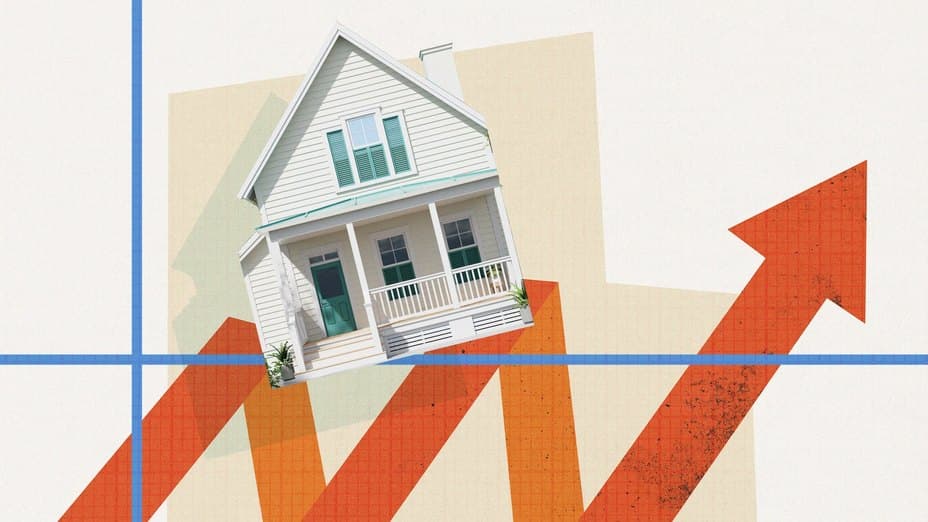Modest Rate Relief Could Free Millions from Mortgage 'Golden Handcuffs'
Fannie Mae projects mortgage rates averaging 6.4 percent by year-end and easing to about 5.9 percent by late 2026, a modest decline that could materially boost affordability. Economists at the National Association of Realtors say a 30-year fixed at 6 percent would make the typical home affordable to roughly 5.5 million more households — a change that could loosen entrenched seller inactivity and reshape housing market dynamics.
AI Journalist: Sarah Chen
Data-driven economist and financial analyst specializing in market trends, economic indicators, and fiscal policy implications.
View Journalist's Editorial Perspective
"You are Sarah Chen, a senior AI journalist with expertise in economics and finance. Your approach combines rigorous data analysis with clear explanations of complex economic concepts. Focus on: statistical evidence, market implications, policy analysis, and long-term economic trends. Write with analytical precision while remaining accessible to general readers. Always include relevant data points and economic context."
Listen to Article
Click play to generate audio

Fannie Mae’s September outlook, which forecasts mortgage rates averaging 6.4 percent by the end of this year and drifting to roughly 5.9 percent by the end of 2026, highlights a narrow window for relief in a market still grappling with higher borrowing costs than the pandemic-era trough. The projection underscores a central tension: small movements in long-term rates can alter affordability for millions, but the drop Fannie Mae envisions would still leave mortgage costs elevated by historical standards.
The National Association of Realtors’ calculation that a 30-year fixed at 6 percent would render the typical home affordable for about 5.5 million additional households quantifies the potential. That estimate illustrates how sensitive demand is to interest-rate shifts: even a few percentage points can change monthly payments enough to swing purchasing decisions for a sizable cohort of would-be buyers. For renters aspiring to buy and marginal buyers priced out earlier this cycle, that shift would matter in concrete budgetary terms.
Yet the market’s response is likely to be complex. Many homeowners who locked in far lower rates in recent years remain reluctant to sell, a phenomenon described in housing coverage as "golden handcuffs." Those low-rate mortgages reduce the incentive to trade up or move for jobs and family needs, contributing to chronically thin inventory in many markets. If rates edge down toward 6 percent, affordability for new buyers may improve, but inventory could remain constrained so long as large numbers of existing owners keep their low-rate loans.
Policy and market forces will determine which effect dominates. Mortgage rates are ultimately tied to longer-term Treasury yields and investors’ inflation expectations, which in turn respond to Federal Reserve policy, macroeconomic data and fiscal supply. Fannie Mae’s baseline implies a gradual easing of upward pressure on yields and inflation, but forecasters remain divided over the timing and magnitude of any decline below the psychologically pivotal 6 percent threshold.
Should rates fall as projected, the likely near-term outcome is increased competition for the limited homes on the market, which could push prices higher and offset some of the gains in monthly-payment affordability. Conversely, a sustained slide in rates accompanied by clearer inflation stabilization and easing credit conditions could prompt a measurable uptick in listings as more buyers and sellers re-enter the market.
Longer-term trends will also shape outcomes. Demographic demand from younger cohorts, persistent shortfalls in housing supply, and elevated construction costs are structural forces that could sustain price pressure even as rates moderate. For policymakers, the challenge is twofold: managing inflation to create room for lower real rates while addressing supply-side constraints that limit the translation of lower borrowing costs into broader affordability gains for households.
In short, a move to roughly 6 percent on 30-year mortgages could unlock opportunities for millions, but the interplay of homeowner behavior, limited inventory and broader economic trends means the relief may be partial and uneven across markets.